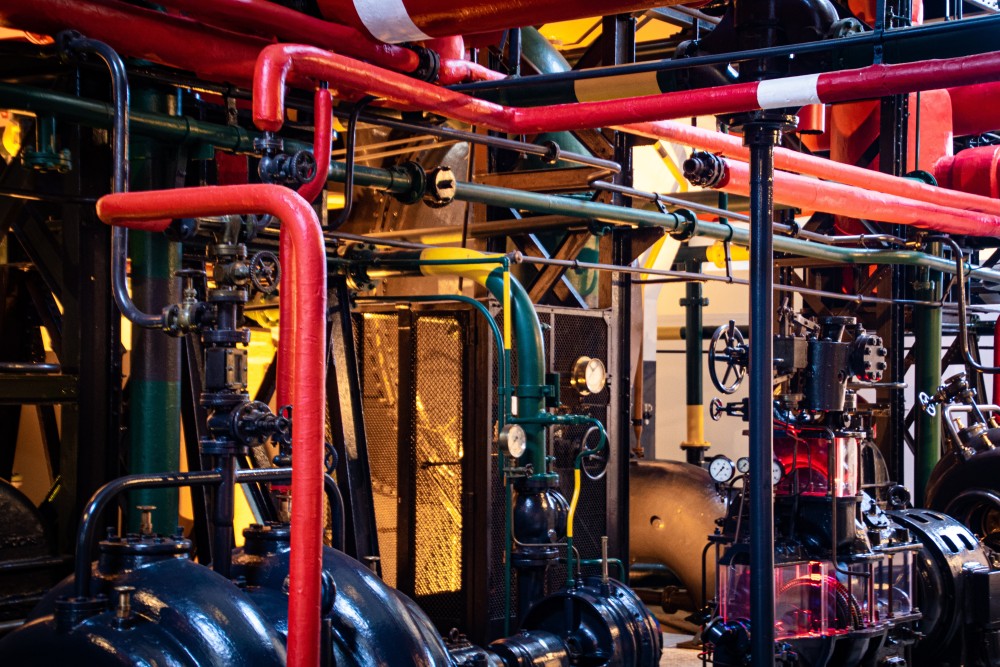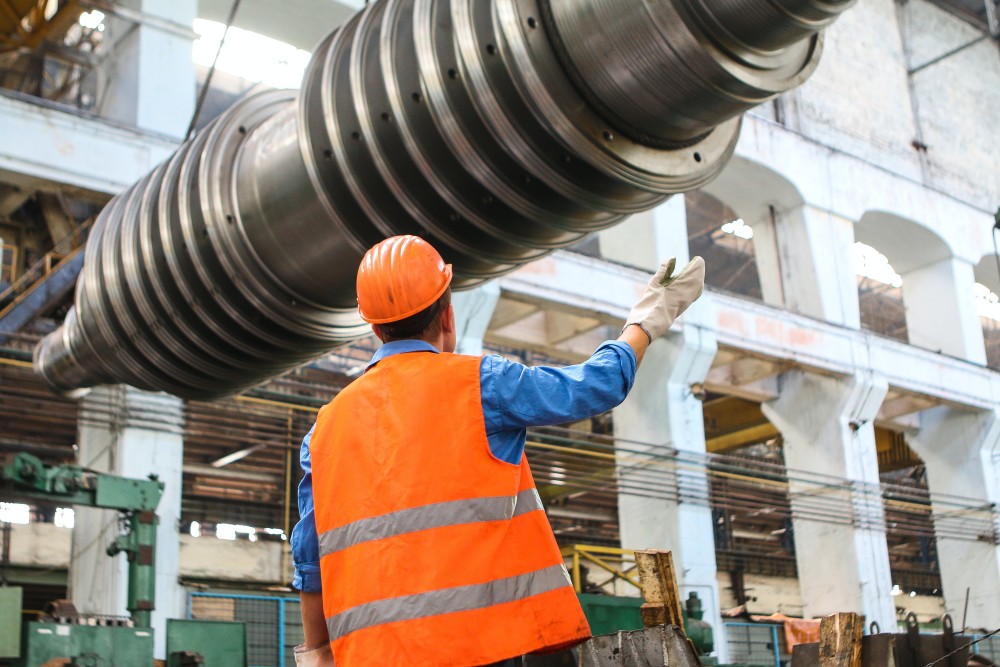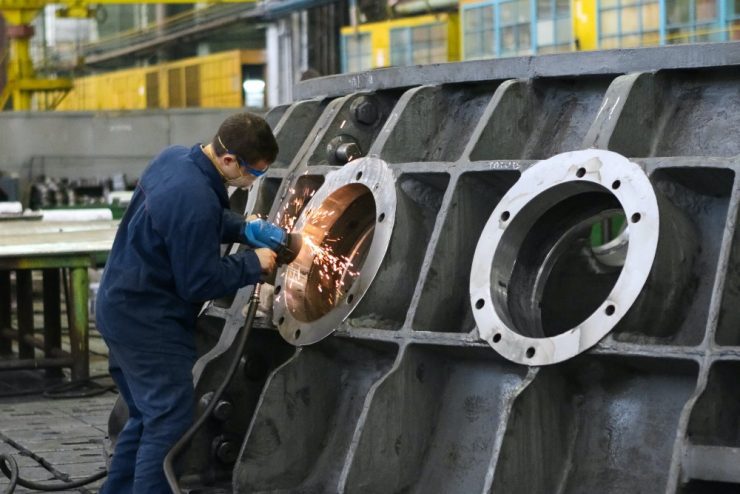Hamid Al-najjar, Maintenance Engineer at Seco Tools, will be joining us as one of the speakers at the virtual Maintenance Analytics Summit. During his presentation, Hamid will reveal a ten metrics approach that enables industrial companies to manage assets lifecycle and its performance from the inception to disposal with less cost.
In this pre-event warmup interview, Hamid talked to us how he came to the idea of the ten metrics approach for asset lifecycle management, the benefits of it, as well as some predictive maintenance fundamentals that industrial companies need to set straight before implementing a suitable maintenance strategy.
Hyperight: You are going to give a presentation on Asset lifecycle management from inception to disposal by the aid of ten metrics approach. Could you reveal to us more about these ten metrics? What are they and how did you come up with them?


Hamid Al-najjar: Absolutely, I have a passion for what I do and love the issues that I work with. This drives me to be a creative person. Besides this, I am a problem solver. The idea started when I got an assignment from my chief almost eight years ago to develop and establish a business case. However, the assignment dealt with RAMS – Reliability, Availability, Maintainability, and Safety.
I worked diligently on this project because I loved it. Secondly, the more I researched, the more doors have opened for me. Since this idea lived with me day and night, I continued to develop it until I got a holistic picture that contained all details, motivations, answers, tools, methods, strategies etc.
The Ten Metrics Approach consist of Reliability, Availability, Maintenance, Maintainability, Supportability, Operation, Safety, Environment, Economy and, last but not least, People. I came across them, as I mentioned above, when I broke down each metric by the aid of analysis.
When I worked with RAMS-business case development, I realised that the asset does rest on ten pillars. I have also discovered that all of these pillars intersect each other in several points, depending on each other (see the examples down) and can be affected by each other and vice versa.
Therefore, one has to consider all of these metrics so that the asset delivers its desired function and lives out its lifespan with minimum costs.


Hyperight: Why should industrial companies consider “The Ten Metrics Approach” and what is the benefit of applying it?
Hamid Al-najjar: When applying this approach, the companies shall be enabled to capture all loose threads and integrate them. In my experience, industrial companies do not integrate all of these metrics that have been identified in this approach. What we see is everyone working in silos. In addition to that, the relationship among all involved departments is identified as Supplier-Customer relationship, despite them working for the same company. A supplier-customer relationship means “if you do your business, then I will do mine and we do not care for the rest”.
When the company establishes this approach, the Supplier-Customer relationship changes to a partner relationship. The management will practically show all involved departments that they are all in the same boat, and they are rowing towards the same target. Leaders and management must show people the ownership and family feeling throughout their engagement and support.
The approach shows that there are several intersection points among these element metrics. That means all of those metrics are depending on each other, which in turn means they must be integrated. That will lead to all departments working horizontally instead of working in silos and driving their own race without involving other departments.
The ten metrics approach looks like a toolbox that contains different methods, tools, strategies, approaches etc. Those tools are created to solve all problems that occur from the point when companies want to write a technical specification for procurement of an asset, during the asset’s life length, and until it goes out of production.


Hyperight: What would you say are the hinders for companies in implementing predictive maintenance and asset lifecycle management programmes? And what actions can be taken to surpass these hinders?
Hamid Al-najjar: First of all, I would like to clarify that during all these years that I have worked with maintenance and its issues in different branches and sectors, I haven’t found a complete asset lifecycle management programme that takes into account assets and related issues from the inception to disposal.
On the other hand, PdM (Predictive Maintenance) in its both ways objective and subjective and all other maintenance strategies such as PM (Preventive Maintenance), TPM (Total Productive Maintenance), RCM (Reliability Centered Maintenance), RTF ( Run To Failure) etc., are a part of an Asset Lifecycle Management programme. However, the maintenance and reliability concept should be determined by the actual plant. The decision must be based on cost-effective methodology, which in turn relies on a comprehensive analysis that considers all important aspects/criteria, e.g. safety, environment, availability, quality, economy/finance etc.
I can mention some examples from our day-to-day scenarios:
Ex.1
Imagine that a company has the best maintenance and reliability concept and crew in place, and also the best high-tech tools/instruments and EAM/CMMS. The question is, what they can do with their knowledge and tools if assets inherent reliability is poor?
They just cannot blow a new life in it!
How?
Well, because one of the main stakeholders, the manufacturer, did not do his homework, e.g. poor construction/design, poor choice of components, lack of tests etc.
Ex.2
If we switch the idea. Let’s say the first main stakeholder did his homework. This means the manufacturer delivered an asset with high reliability and fulfilled all demands/promises.
However, the second main stakeholder, the end-user, did not do his homework this time!
How?
We assumed that the inherent reliability of the asset is very high, but the question is how long the MTBF (Mean Time Between Failure) /MTTF (Mean Time To Failure) will be?
When, e.g. maintenance/reliability concepts are weak, lack of resources, lack of competences/skills, etc.?
Ex.3
The manufacturer delivered an asset with high reliability and fulfilled all demands/promises.
However, the production department does not follow manufacturers and maintenance/reliability recommendations regarding assets capacity. The asset has been overloaded more than what it can tolerate.
Machines production overload affects machines’ life length, increases deteriorations and fatigue, that in turn shortens its MTBM/MTTF.
Nevertheless, by the aid of RCA (Root Cause Analysis), one finds many related roots that could lie behind why companies do not implement PdM or Asset Lifecycle Management programmes. Some of them are lack of knowledge, culture, too expensive, human factors etc.
I can conclude that maintenance is not a stand-alone component. It can affect other elements and can be affected by other elements due to the intersections points among them. This is what industrial companies must consider in order to ensure that their assets live out their lifespan, deliver the desired function(s) with minimum cost. This is what I am going to show and prove in my approach “Asset lifecycle management from inception to disposal by the aid of ten metrics approach“.


Hyperight: What’s the state of predictive maintenance implementation with companies today in Sweden? Are they able to fully utilise their machine data and take measures based on advanced analytics to predict and avoid asset failures?
Hamid Al-najjar: I would like to start with a definition of PdM that most of the Swedish industrial companies are not much aware of.
PdM (Predictive Maintenance)
This philosophy consists of scheduling maintenance activities only if and when mechanical or operational conditions warrant-by periodically monitoring the machinery for excessive vibration, temperature, lubrication degradation, or by observing any unhealthy trends that occur over time. (Maintenance Technology, Om Prakash 2007, John Moubray 2nd edition, Maintenance Planning and control (Anthony Kelly, Butterworths, London 1986) BLANCHARD).
Approaches to PdM
- The heart of condition-based maintenance is condition monitoring.
- A subjective qualitative condition checking or visual monitoring such as (ear, eyes, nose, skin, tongue).
- Objective methods such as vibration monitoring, wear debris/lubricant monitoring, oil analysis, temperature monitoring, performance monitoring, etc.
Some of the companies have already started this journey. In my experiences, the main reason that lies behind why companies do not utilise PdM is the lack of knowledge among chiefs and middle chiefs.
Secondly, most chiefs fear analysis. I always hear that analysis requires many resources and becomes too expensive. I agree that the analysis requires many resources, and it becomes costly. However, we can gather and calculate all costs for small actions which have been done here and there over a period of time, when people work on the surface to solve a problem without digging deeper, compare it with the expenses for conducting an analysis. This way, we will discover that the expenses that have been spent on all of these small actions are much higher than if we do the full analysis at the end of the day.
Additionally, to work on the surface is not a proper strategy to solve a problem, because it doesn’t enable the engineer to find out the real root(s) that lie behind the problem and solve the problem permanently. On the other hand, it will not prevent the problem from recurring. However, when the analyst identifies and defines the root(s), then it will be easier to reduce or eliminate the problem.
Furthermore, most analyses are generic. That means the data/information will be reused again with maybe small adjustments. In addition to that, logically, the analysis is a good foundation for making a correct decision.
On the other hand, PdM is not always the most suitable maintenance strategy. To decide whether PdM or another maintenance strategy is the most suitable for a company, a comprehensive analysis must be conducted. For example, the analyst must investigate all the alternatives such as PM, PdM, TPM, RCM, RTF, make a comparison among them and let the numbers talk.
Besides, many industrial companies retain old machines that are not compatible with new technologies in production. This phenomenon makes the implementation of objective PdM almost impossible.
Additionally, the implementation of objective PdM and its tools, system, strategies etc. are very valuable if the engineers can show the benefits compared with other maintenance strategies.


Hyperight: And one last question Hamid. Experts are talking about the next level of maintenance based on cognitive analytics where AI systems can autonomously learn from past actions, find correlations, learn from outcomes and give prescriptions. Do you see it happening any soon in the industry, what are your future outlooks for cognitive maintenance?
Hamid Al-najjar: In my experiences, I think we need first to ask ourselves some basic questions before we go further:
- Do we all know and understand the true meaning/definition of maintenance and reliability?
- Do people that work with maintenance and reliability have the most updated educational, competencies/skills within maintenance and reliability?
- Do the maintenance/reliability managers have the right background to be able to steer the department and deliver the desired function?
- Do the chiefs and middle chiefs know the value of maintenance and reliability, and how much these elements affect a company’s profitability and competitiveness?
- Do the maintenance and reliability engineers/managers know the relationship between maintenance, reliability, availability, etc., and asset management?
- Does the company have a culture that encourages and supports new ideas?
- Does the company believe in continuous improvement strategy and apply it in reality? E.g. Does the company invest in new assets that are compatible with new technologies?
A transparent answer to these questions will reveal the current situation of the company and whether the company is mature for this step or not.
Maintenance has developed a lot after the Second World War. However, a lot of maintenance engineers/managers still work according to the old classic school. They see maintenance in the following fashion: “an asset is down, send some technician to fix it, that’s it”. Often we notice that these people work as “firemen” = reactive culture”. They are waiting for an email or phone call, asking them to take actions because something is burning. This kind of action makes them “a hero” and many people love to be in this situation.
In my world, the maintenance crew must work proactively as a detective on the murder scene. All decisions should be based on facts and analysis. Maintenance engineer/manager must be involved from the beginning of the procurement process of an asset to be able to contribute with demands and other recommendations. Maintenance work should be centralised.
That is a much better approach than involving multiple players as it links the problem and the solution. Maintenance department must be integrated with other departments to be able to act in good time. Last but not least, the maintenance department is an important department in which the company must invest and not see it as a cost that should be reduced.
Logically, a machine needs maintenance as long as it spins. This implies that maintenance is a journey, not a destination; it is a process and not a product.














Add comment